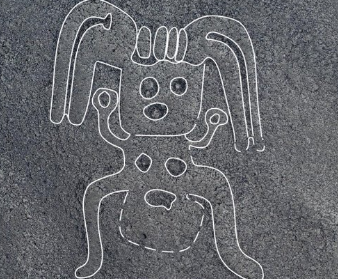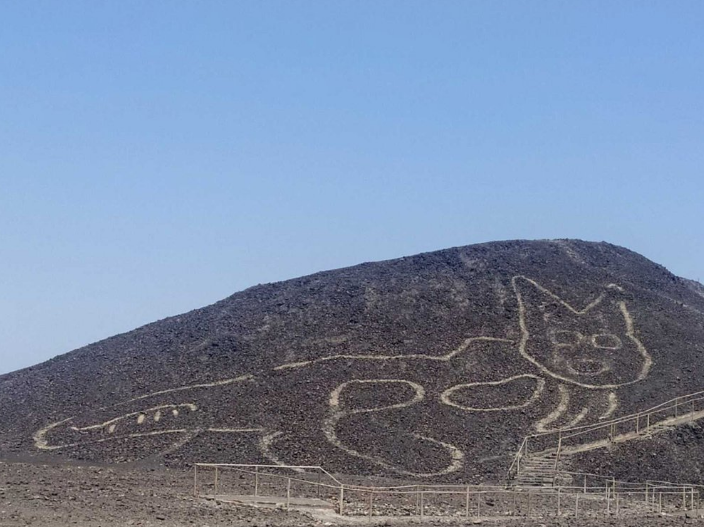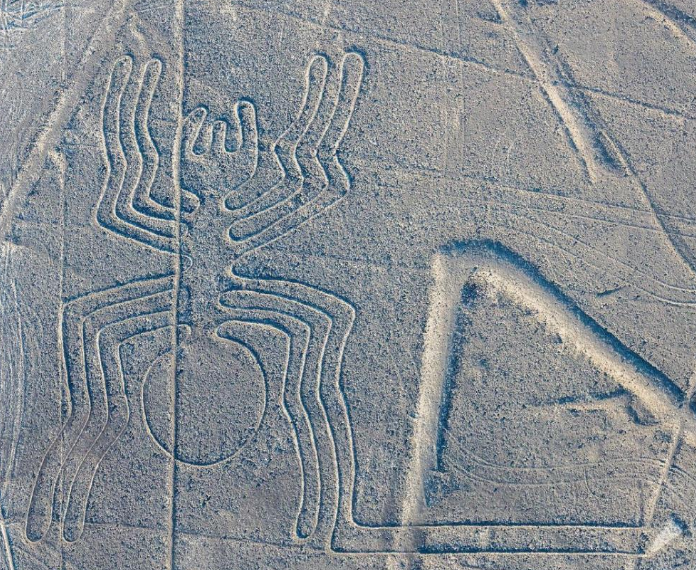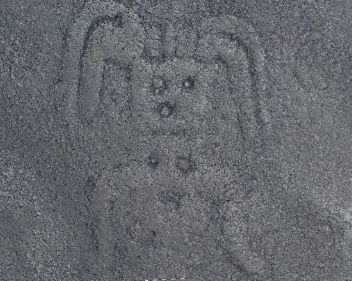Cartoonish Cat Figure Uncovered by Scientists in Peru Turns Out to Be the Oldest Nazca Line at 2,000 Years
A remarkable geoglyph, believed to be older than any previously discovered in Peru’s Nazca region, has emerged, dating back to 200-100 B.C. This stealthy geoglyph, hidden on a steep slope, was on the verge of disappearing due to the erosive forces of nature. Fortunately, the Ministry of Culture in Peru intervened just in time to preserve this ancient masterpiece.
Carved into a hillside approximately 250 miles southeast of the Peruvian capital, the cat figure stretches an impressive 120 feet in length, featuring wide, orb-like eyes and an appearance as if it is basking in the sun’s warmth.
The Nazca lines, a collection of immense drawings etched into the soil by the Nazca culture between 500 BCE and 500 CE, captivate the imagination. Discovered by Peruvian archaeologist Toribio Mejia Xesspe in 1927, these enigmatic lines were created by removing pebbles and dirt, exposing lighter-colored soil beneath the reddish-brown surface. Known as geoglyphs, they predominantly consist of straight lines traversing the landscape, while others depict a range of animals, including monkeys, spiders, hummingbirds, whales, fish, and even humanoid figures, mirroring many prehistoric drawings.
Peru’s chief archaeologist for the Nazca Lines, Johny Isla, revealed that the colossal cat drawing predates the Nazca culture itself, originating from the late Paracas era between 500 BCE and 200 CE. This makes the feline geoglyph the oldest ever discovered in the region, providing a fascinating glimpse into the ancient civilizations that once thrived there.
The purpose behind these monumental symbols etched into the ground remains shrouded in mystery. While no definitive answer exists, some archaeologists suggest that they might have served as travel markers or offerings to celestial deities for their celestial viewing pleasure.

One thing is certain: the Nazca Lines hold immense cultural and historical significance. Recognizing their importance, UNESCO designated them as a World Heritage Site in 1994. As technology advances, more prehistoric images continue to be uncovered, expanding the site’s magnitude.
In 2019, researchers from Japan’s Yamagata University utilized artificial intelligence to enhance visuals of 143 line drawings, revealing outlines of both real and mythical creatures. These discoveries included an angular bird-like animal and a two-headed serpent, hinting at the rich tapestry of stories that the Nazca Lines may yet unveil.
With ongoing exploration, who knows what other hidden wonders lie dormant within this extraordinary site? The tale of the Nazca Lines continues to captivate our curiosity, inviting us to delve further into their ancient enigma.
Hits: 14







